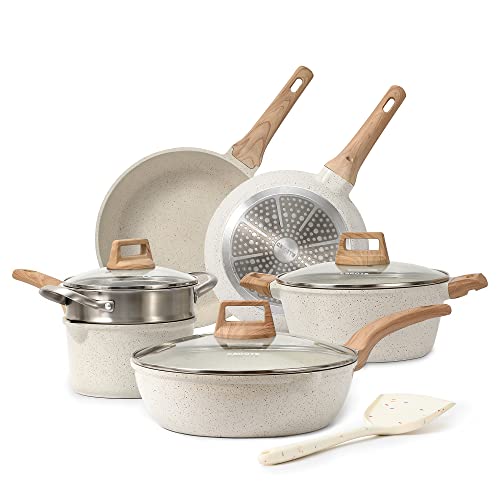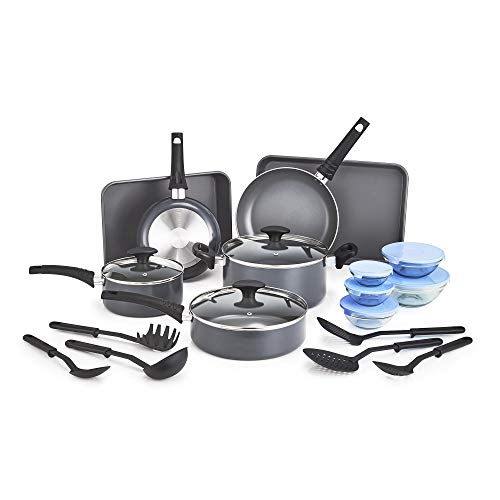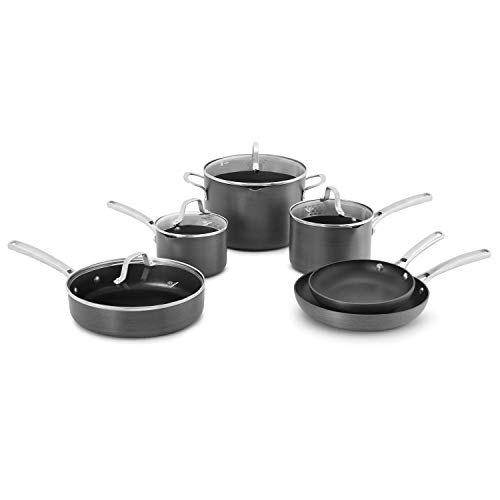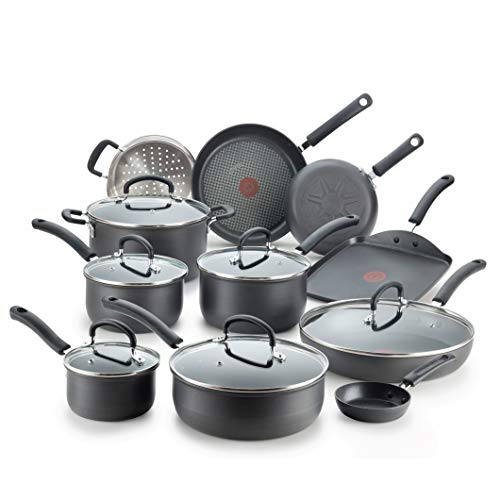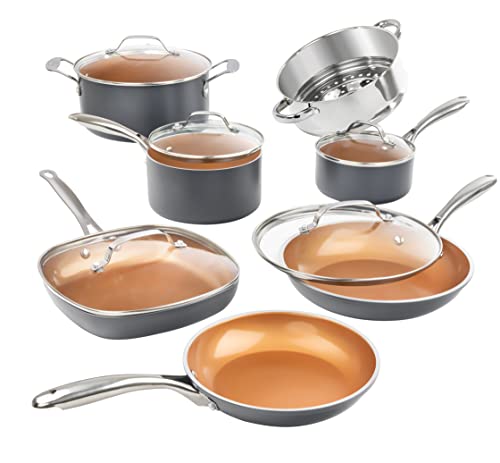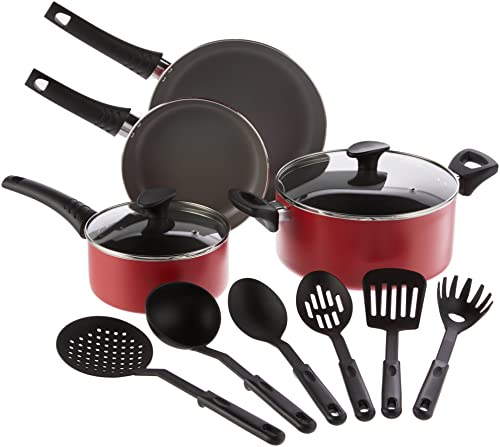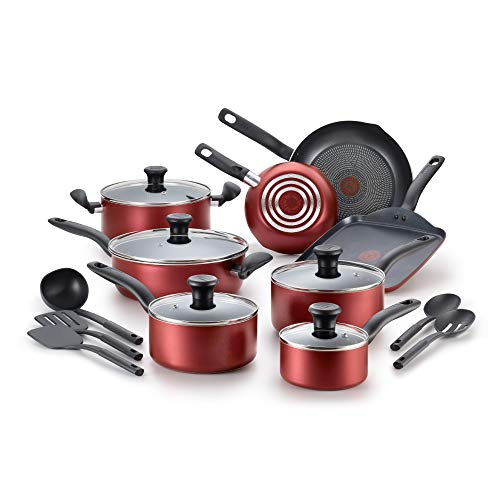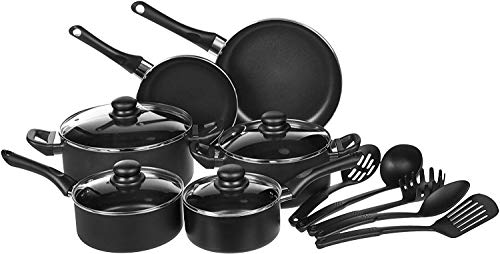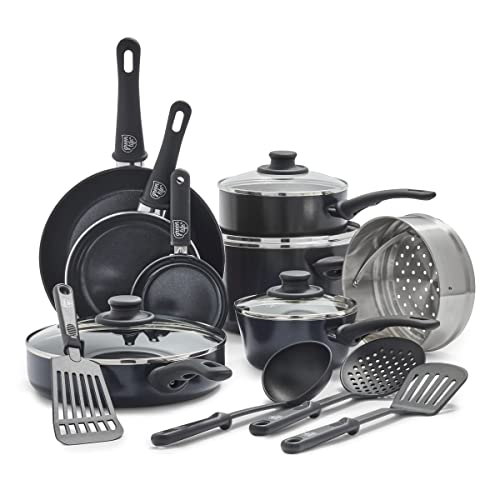Table of Contents
Best Nonstick Cookware Consumer Reports, Ratings, Reviews, Tips, and Guides in 2022
If you’re like most people, you probably think that the best nonstick cookware is the brand that your mom or grandma always used. But what if we told you that there are better options out there? In this blog post, we’ll be discussing the best nonstick cookware available according to Consumer Reports. So whether you’re in the market for a new set of pots and pans or just want to compare brands, read on for more information.
Top 10 Best Nonstick Cookware to Buy in 2022:
Below is the list of top 10 Best Nonstick Cookware that you can have a look at and buy. Check one by one carefully before purchasing.
*Note: Score is based on our AI score (Editor’s choice and rating)
What is Nonstick Cookware?
Nonstick cookware is a type of cookware that has a coating on the cooking surface that prevents food from sticking. This can be beneficial for both cooking and cleanup, as it means that you won’t have to scrub pots and pans as vigorously to remove stuck-on food. Nonstick cookware is usually made of either aluminum or stainless steel, and the coating is usually applied to the cooking surface through a process called anodization.
How Does Nonstick Cookware work?
The nonstick coating on cookware works by creating a barrier between the food and the pan. When food comes into contact with the pan, it forms a bond with the molecules in the nonstick coating. This bond is strong enough to prevent the food from sticking to the pan, but weak enough that it can be easily broken when you remove the food from the pan.
What Are the Different Types of Nonstick Cookware ?
There are three main types of nonstick cookware: ceramic, aluminum, and stainless steel. Each type has its own benefits and drawbacks, so it’s important to choose the right one for your needs.
Ceramic cookware is made of a clay-based material that is coated with a nonstick substance. It is lightweight and has excellent heat conductivity, making it a good choice for cooking at high temperatures. However, ceramic cookware is not as durable as other types of nonstick cookware and can be more difficult to clean.
Aluminum cookware is made of an aluminum alloy that is coated with a nonstick material. It is lightweight and heats quickly, but it is not as durable as other types of cookware and can be more difficult to clean.
Stainless steel cookware is made of a stainless steel alloy that is coated with a nonstick material. It is heavier than other types of cookware, but it is more durable and easier to clean. Stainless steel cookware is also less likely to react with food, making it a good choice for cooking acidic foods.
Benefits of Nonstick Cookware:
If you’re like most people, you probably have a few nonstick pans in your kitchen.They’re convenient for cooking eggs, pancakes, and grilled cheese sandwiches. But nonstick cookware has some hidden benefits that you may not know about.
1. Nonstick cookware is easy to clean.
If you’ve ever cooked with a traditional pan, you know how difficult it can be to clean off the burnt-on food. Nonstick cookware is much easier to clean because the food doesn’t stick to the surface.
2. Nonstick cookware is more energy-efficient.
Cooking with a nonstick pan requires less energy because the food doesn’t stick to the surface. This means that you can save money on your energy bill.
3. Nonstick cookware is healthier.
When food sticks to the surface of a pan, it can release harmful chemicals into the food. Nonstick cookware doesn’t have this problem because the food doesn’t stick.
4. Nonstick cookware is more versatile.
Nonstick cookware can be used for more than just cooking eggs and pancakes. You can use it for baking, roasting, and even stir-frying.
5. Nonstick cookware is safer.
Traditional cookware is made of metal, which can be dangerous if it’s not used properly. Nonstick cookware is made of a safer material that won’t cause injuries if it’s used properly.
Factors to Consider Before Buying Nonstick Cookware?
1.Size and shape
The size and shape of your pan should be determined by the type of food you plan on cooking. If you’re only going to be cooking for one or two people, then a smaller pan will suffice. However, if you’re planning on cooking for a larger group, then you’ll need a larger pan.
2. Material
The material of your pan is also important to consider. Nonstick cookware is usually made from aluminum or ceramic. Aluminum is a good choice because it’s lightweight and conducts heat well. Ceramic is a good choice if you’re looking for a non-toxic option.
3. Price
Nonstick cookware can range in price from relatively inexpensive to quite expensive. The price will usually be determined by the quality of the cookware. In general, the better the quality, the more expensive the cookware will be.
4. Brand
There are many different brands of nonstick cookware on the market. Some of the most popular brands include T-Fal, Calphalon, and Anolon. When choosing a brand, it’s important to read reviews to see what other people have to say about the quality of the cookware.
5. Warranty
It’s also important to consider the warranty when choosing nonstick cookware. Some brands offer lifetime warranties, while others only offer a limited warranty. Be sure to read the fine print so you know what’s covered in case of damage or defects.
6. Design
You’ll also want to consider the design of the cookware. Some nonstick cookware is designed with a ridged surface, while others have a smooth surface. The type of design you choose should be based on your personal preference and the type of food you plan on cooking.
7. Color
Nonstick cookware is usually available in a variety of colors. The color you choose should be based on your personal preference and the overall décor of your kitchen.
8. Customer Service
It’s important to choose a brand that offers good customer service. This way, you’ll be able to get help if you have any problems with your cookware.
9. Return Policy
Finally, be sure to check the return policy before purchasing nonstick cookware. This way, you can return the cookware if it doesn’t meet your expectations.
Pros and Cons of Nonstick Cookware:
Pros:
Nonstick cookware is very easy to use. Even if you’ve never cooked before, you can probably figure out how to use a nonstick pan.
Nonstick cookware is also very easy to clean. Since the food doesn’t stick to the pan, you can usually just wipe it clean with a damp cloth. No scrubbing required!
Nonstick cookware is often less expensive than other types of cookware.
Nonstick cookware is available in a variety of sizes and shapes, so you can find the perfect pan for your needs.
Nonstick cookware can be used on a variety of cooking surfaces, including electric and gas stovetops.
Cons:
Nonstick cookware is not indestructible. The coating can scratch or chip over time, especially if you use metal utensils.
How to Use Nonstick cookware:
When using nonstick cookware, it’s important to keep the following tips in mind:
1. Use low to moderate heat. High heat can damage the nonstick coating.
2. Use wooden or nylon utensils. Metal utensils can damage the nonstick coating.
3. Don’t overcrowd the pan. This can cause the food to stick.
4. Don’t store food in the pan. The acid in some foods can damage the nonstick coating.
5. Don’t let the pan boil dry. This can also damage the nonstick coating.
With proper care, your nonstick cookware can last for many years. Follow the manufacturer’s instructions for the best results.
Common Mistakes When Using Nonstick Cookware
When it comes to cookware, nonstick is often thought of as the best option. Nonstick cookware is easy to clean, doesn’t require much oil or butter, and can help prevent sticking and burning. However, there are a few common mistakes that people make when using nonstick cookware.
One common mistake is using too much heat. Nonstick cookware is designed for use at lower temperatures, so using too much heat can damage the coating and cause it to flake off. This can be a safety hazard, as well as causing your food to stick and burn.
Another common mistake is not using enough oil or butter. While nonstick cookware doesn’t require as much fat as other types of cookware, using too little can cause your food to stick. Make sure to use enough oil or butter to coat the bottom of the pan and prevent sticking.
Finally, people often make the mistake of not properly cleaning their nonstick cookware. Even though the coating is designed to be nonstick, it can still accumulate dirt and grime over time. When cleaning, be sure to use a mild soap and avoid using abrasive cleaners or scrubbers. With proper care, your nonstick cookware will last for years.
FAQs
1. What is the best way to clean my nonstick cookware?
The best way to clean your nonstick cookware is with a mild soap and warm water. Avoid using abrasive cleaners or scrubbers, as this can damage the nonstick coating.
2. How do I know if my nonstick cookware is safe to use?
The best way to determine if your nonstick cookware is safe to use is to check the manufacturer’s instructions. Some manufacturers recommend not using metal utensils, while others say it’s okay.
3. How long will my nonstick cookware last?
With proper care, your nonstick cookware can last for years. Be sure to follow the manufacturer’s instructions for cleaning and storing your cookware.
4. What are the disadvantages of nonstick cookware?
The main disadvantage of nonstick cookware is that it can be difficult to clean. Even though the coating is designed to be nonstick, it can still become stained and scratched over time.
5. Are there any alternatives to nonstick cookware?
There are a few alternatives to nonstick cookware, including cast iron and stainless steel. However, these materials don’t have the same nonstick properties as traditional nonstick cookware.
6.Can I use nonstick cookware on a glass stovetop?
Some types of nonstick cookware can be used on a glass stovetop. However, it’s important to check the manufacturer’s instructions to be sure. Some types of nonstick cookware can damage a glass stovetop if not used correctly.
7. Can I use nonstick cookware in the oven?
Yes, you can use nonstick cookware in the oven. However, it’s important to check the manufacturer’s instructions to be sure. Some types of nonstick cookware can only be used up to a certain temperature.
8. What is the difference between ceramic and aluminum cookware?
Ceramic cookware is usually lighter than aluminum cookware and has a smoother surface. Aluminum cookware is often less expensive than ceramic cookware and heats up more quickly.
9. Can I use nonstick cookware on an induction stovetop?
Yes, you can use nonstick cookware on an induction stovetop. However, it’s important to check the manufacturer’s instructions to be sure. Some types of nonstick cookware can damage an induction stovetop if not used correctly.
10. What is the best way to store my nonstick cookware?
The best way to store your nonstick cookware is in a cool, dry place. Be sure to clean and dry your cookware before storing it. Also, avoid stacking your cookware on top of each other, as this can damage the nonstick coating.
11.Can you heat a nonstick pan without oil?
Yes, you can heat a nonstick pan without oil. However, it’s important to check the manufacturer’s instructions to be sure. Some types of nonstick cookware can be damaged if heated without oil.
12. Can I put my nonstick cookware in the dishwasher?
The best way to clean your nonstick cookware is with a mild soap and warm water. Avoid using abrasive cleaners or scrubbers, as this can damage the nonstick coating. Most manufacturers do not recommend putting nonstick cookware in the dishwasher.
13.Can I fry in a nonstick pan?
Yes, you can fry in a nonstick pan. However, it’s important to check the manufacturer’s instructions to be sure. Some types of nonstick cookware can be damaged if heated too high.
14.Can you repair non-stick coating?
If the nonstick coating on your cookware is scratched or damaged, it’s important to replace it. Using damaged cookware can release harmful chemicals into your food. There are a few companies that specialize in repairing or replacing nonstick coatings.
15. What are some tips for using nonstick cookware?
Some tips for using nonstick cookware include:
- Use wooden, plastic, or silicone utensils to avoid scratching the nonstick coating.
- Don’t heat the pan too high, as this can damage the nonstick coating.
- Be sure to clean and dry the cookware before storing it.
- Avoid stacking your cookware on top of each other, as this can damage the nonstick coating.
- Most manufacturers do not recommend putting nonstick cookware in the dishwasher.
- If the nonstick coating on your cookware is scratched or damaged, it’s important to replace it. Using damaged cookware can release harmful chemicals into your food.
Conclusion
If you’re in the market for a new set of cookware, you may be wondering if nonstick is the way to go. After all, who doesn’t love not having to scrub pans clean? According to Consumer Reports, there are some things you should know before buying nonstick cookware.
First and foremost, it’s important to make sure that whatever set you choose has been tested and certified as free of harmful chemicals like PFOA. Beyond that, look for pans with a durable coating that can withstand high temperatures without flaking or peeling.
With those considerations in mind, our top pick for best nonstick cookware is the T-Fal Signature Hard Anodized Fry Pan Set. It scored well in all of our tests and comes at a reasonable price point. Have you tried any of these brands or products? Let us know how they worked for you in the comments below.
Related Articles:
- Best Kitchen Faucets Consumer Reports
- Top 10 Best Kitchen Chopper Of 2022
- Top 10 Best Kitchen Mixer Reviews
- The 10 Best Kitchen Sinks
- Best Food Dehydrator Consumer Reports
- Top 10 Best Kitchen Knives Consumer Reports
- Best Water Softener Consumer Reports
Richard Jimenez is a chef with an impressive culinary resume. He has worked in some of the most prestigious kitchens in the country, and has been featured in several cooking magazines. Richard loves to share his recipes, tips, and best kitchen tools with others. He believes that everyone should be able to cook delicious meals at home, and is passionate about helping people achieve this goal.
